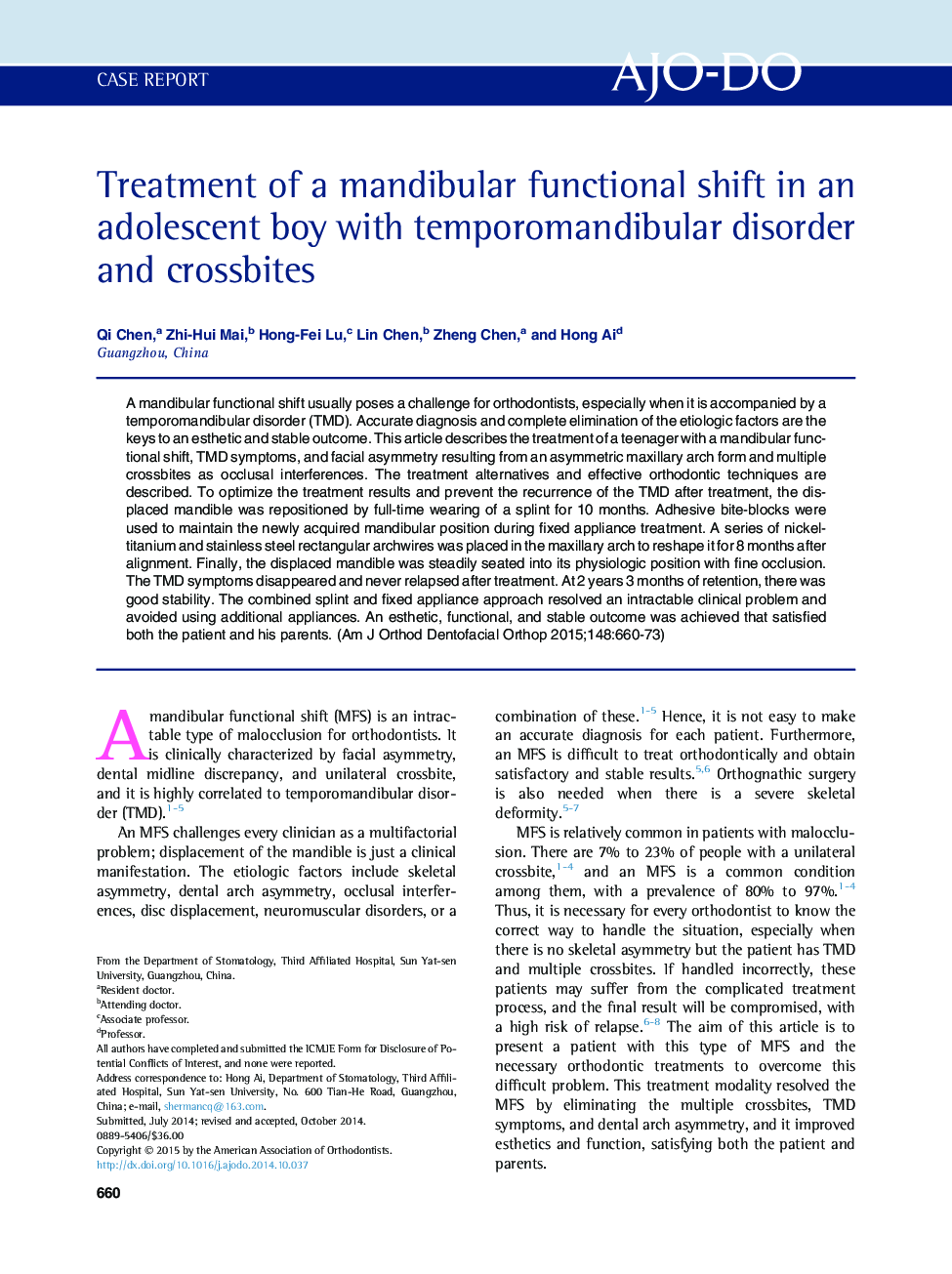| Article ID | Journal | Published Year | Pages | File Type |
|---|---|---|---|---|
| 3115872 | American Journal of Orthodontics and Dentofacial Orthopedics | 2015 | 14 Pages |
•Accurate diagnosis and complete elimination of the etiologic factors are the keys.•Adhesive bite-blocks were used to maintain the newly acquired mandibular position.•The combination of splint and fixed appliance treatment is an effective method for treating mandibular functional shift.
A mandibular functional shift usually poses a challenge for orthodontists, especially when it is accompanied by a temporomandibular disorder (TMD). Accurate diagnosis and complete elimination of the etiologic factors are the keys to an esthetic and stable outcome. This article describes the treatment of a teenager with a mandibular functional shift, TMD symptoms, and facial asymmetry resulting from an asymmetric maxillary arch form and multiple crossbites as occlusal interferences. The treatment alternatives and effective orthodontic techniques are described. To optimize the treatment results and prevent the recurrence of the TMD after treatment, the displaced mandible was repositioned by full-time wearing of a splint for 10 months. Adhesive bite-blocks were used to maintain the newly acquired mandibular position during fixed appliance treatment. A series of nickel-titanium and stainless steel rectangular archwires was placed in the maxillary arch to reshape it for 8 months after alignment. Finally, the displaced mandible was steadily seated into its physiologic position with fine occlusion. The TMD symptoms disappeared and never relapsed after treatment. At 2 years 3 months of retention, there was good stability. The combined splint and fixed appliance approach resolved an intractable clinical problem and avoided using additional appliances. An esthetic, functional, and stable outcome was achieved that satisfied both the patient and his parents.
